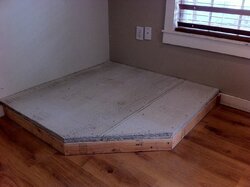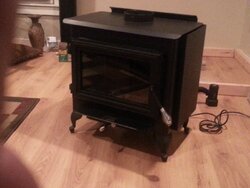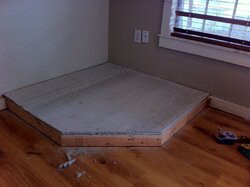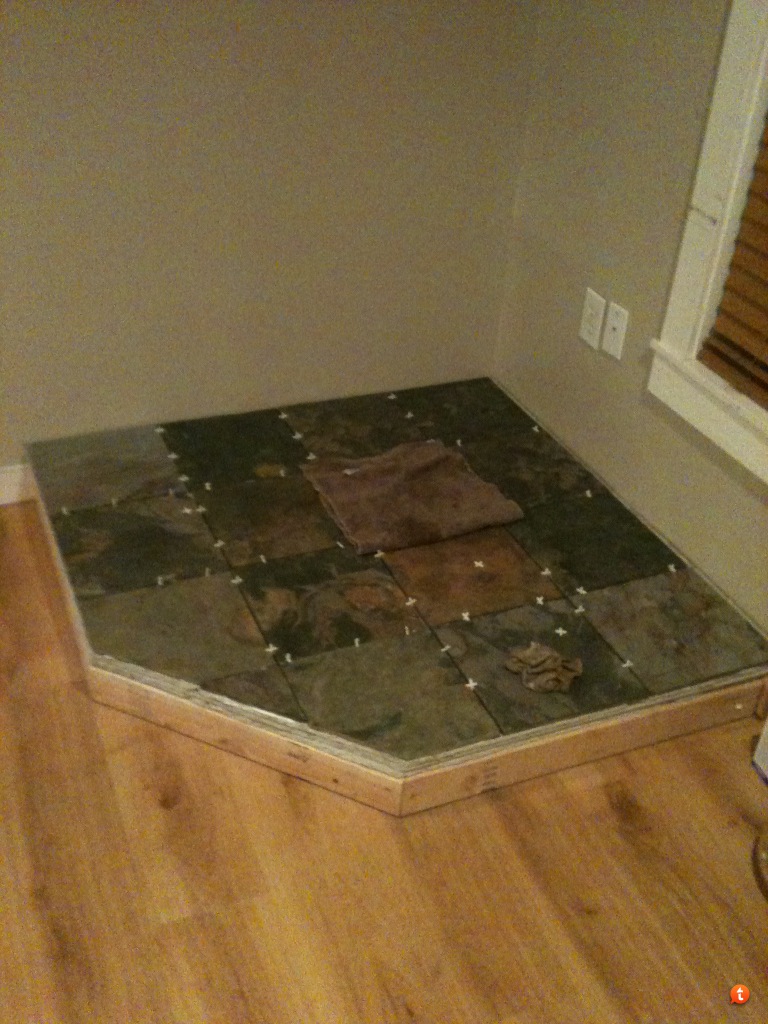Last edited by a moderator:
13 nc has arrived!
- Thread starter Rebelduckman
- Start date
-
Active since 1995, Hearth.com is THE place on the internet for free information and advice about wood stoves, pellet stoves and other energy saving equipment.
We strive to provide opinions, articles, discussions and history related to Hearth Products and in a more general sense, energy issues.
We promote the EFFICIENT, RESPONSIBLE, CLEAN and SAFE use of all fuels, whether renewable or fossil.
You are using an out of date browser. It may not display this or other websites correctly.
You should upgrade or use an alternative browser.
You should upgrade or use an alternative browser.
- Status
- Not open for further replies.
Grisu
Minister of Fire
Looking at those tiny legs, no surprise it needs a R2.0 hearth. I am thinking that a long leg kit option that reduces the hearth requirement would be a good idea.
Looking at those tiny legs, no surprise it needs a R2.0 hearth. I am thinking that a long leg kit option that reduces the hearth requirement would be a good idea.
Ten foot tall legs wouldn't reduce the hearth requirement. Stove has only been tested with the six inch legs.
Grisu
Minister of Fire
Ten foot tall legs wouldn't reduce the hearth requirement. Stove has only been tested with the six inch legs.
Does that mean it is out of the question to test the stove with taller legs to determine what hearth is required then?

Does that mean it is out of the question to test the stove with taller legs to determine what hearth is required then?
Yep. Who is gonna foot twenty grand or so for the testing?
Just asking - but did you plan out for the R2.0 hearth?
Yep, headed to find some metal as we speak. I was gonna try the durock piers but changed my mind. Hopefully I can find some 16-18 gauge
Grisu
Minister of Fire
Yep. Who is gonna foot twenty grand or so for the testing?
Would that be the price for just testing the difference in hearth requirements or is that the price for the full stove approval testing? And why not have Englander sell the legs for $150 extra or so maybe after shipping back the short ones. Then people have the choice between buying/building an extensive hearth or just slapping on some taller legs. Btw. Woodstock offers an optional rear-heatshield for their stoves (at least the Keystone) with reduced clearances. My idea does not seem so out of the world.
Gonna be my first tile job. Any certain kind of thinset i need? Can I cut the tiles with a grinder?Tia
Would that be the price for just testing the difference in hearth requirements or is that the price for the full stove approval testing? And why not have Englander sell the legs for $150 extra or so maybe after shipping back the short ones. Then people have the choice between buying/building an extensive hearth or just slapping on some taller legs. Btw. Woodstock offers an optional rear-heatshield for their stoves (at least the Keystone) with reduced clearances. My idea does not seem so out of the world.
Give ESW a call and talk about it with them.
stoveguy2esw
Minister of Fire
Would that be the price for just testing the difference in hearth requirements or is that the price for the full stove approval testing? And why not have Englander sell the legs for $150 extra or so maybe after shipping back the short ones. Then people have the choice between buying/building an extensive hearth or just slapping on some taller legs. Btw. Woodstock offers an optional rear-heatshield for their stoves (at least the Keystone) with reduced clearances. My idea does not seem so out of the world.
when one submits a unit for testing it has to be tested in any "evolution" of the design, and each set of tests cost upwards of 10 grand (passing or not) in order to have the stove tested and given a lesser R value with the longer legs it would have to be tested for this to determine the reduction (if any) for the longer set. as far as the woodstock example above this was done when they were having the stove certified just as our was to secure listed clearnces on the heat shield for our models such as the 13-nc the Op has.
FWIW the 30-nc was tested with 6 inchers as well and sold now with the 9 inchers as a standard offering, however the R factor was not changed when we went to the stock 9 inchers as a retest requirement would have been necessary to do it. now , had the stove been listed with the 9 inchers we would not be able to offer the 6 inchers as an option without retesting as it would have made for a closer clearnce below the stove where the other way around crwates a larger space.
Grisu
Minister of Fire
when one submits a unit for testing it has to be tested in any "evolution" of the design, and each set of tests cost upwards of 10 grand (passing or not) in order to have the stove tested and given a lesser R value with the longer legs it would have to be tested for this to determine the reduction (if any) for the longer set. as far as the woodstock example above this was done when they were having the stove certified just as our was to secure listed clearnces on the heat shield for our models such as the 13-nc the Op has.
FWIW the 30-nc was tested with 6 inchers as well and sold now with the 9 inchers as a standard offering, however the R factor was not changed when we went to the stock 9 inchers as a retest requirement would have been necessary to do it. now , had the stove been listed with the 9 inchers we would not be able to offer the 6 inchers as an option without retesting as it would have made for a closer clearnce below the stove where the other way around crwates a larger space.
Thanks, that was enlightining. As far as I can see you are moving away from stoves that require hearths with large r-values anyway, so that problem will become a non-issue at some point.
stoveguy2esw
Minister of Fire
Thanks, that was enlightining. As far as I can see you are moving away from stoves that require hearths with large r-values anyway, so that problem will become a non-issue at some point.
yeah, we're making a concerted effort to design for low R factor if not ember protection with our newer designs
That's a good trend. It's a pain to feed a stove that is so low. Isn't the Madison ember protection only?
stoveguy2esw
Minister of Fire
That's a good trend. It's a pain to feed a stove that is so low. Isn't the Madison ember protection only?
yeah the Madison is Ember Protection only , i seriously doubt we will be fielding any more woodstoves with that high a R requirement in the future
Highbeam
Minister of Fire
The goal should be to require NO R-value requirement in my opinion. This is so that when you install an englander on an existing hearth you do not need to worry about what may or may not have been used in the construction. Additionaly, it's easier for new installs. Surely this is the goal already.
RickBlaine
Burning Hunk
Well....SOME of us actually preferred Mary Ann over Ginger. 
I'll stick with the 6 inch legs thank you very much.

I'll stick with the 6 inch legs thank you very much.
Last edited by a moderator:
Is this Durock NexGen? If so, two layers = R 0.78. At R=.039 per 1/2" it would take at least five layers of Durock NexGen to get close to R=2.0. That's why a layer of micore is suggested for the bottom layer.
Is this Durock NexGen? If so, two layers = R 0.78. At R=.039 per 1/2" it would take at least five layers of Durock NexGen to get close to R=2.0. That's why a layer of micore is suggested for the bottom layer.
No micore to be found down here anywhere.
There's 3.5" durock piers under there spaced every 6 inches. I've just put the final layer on to give me 2.17.

Last edited by a moderator:
stoveguy2esw
Minister of Fire
you know 1 inch of ventilated air space = "R-1.43" if the blocked area is designed to allow circulation (not the traditional "joists" but an open area with stringers arranged to take the load without making compartments one could use a durable non combustible subfloor with air space and vents to allow circulation of air and not have to stack durarock in multiple layers
TheBean
Member
If that is natural slate it would be a good idea to seal it before you grout. The sealer will act as a grout releaser making the clean up easier. A second coat of sealer when the grout dries will finish things off. Check the sealer for temperature limits to avoid prolonged off gassing. That stuff can smell pretty nasty. Looks great so far!
This is my first rodeo. I've got a piece of cedar I'm gonna trim with in the front. Would you install that before grouting?
- Status
- Not open for further replies.
Similar threads
- Replies
- 3
- Views
- 938
- Replies
- 36
- Views
- 3K
- Replies
- 6
- Views
- 1K
- Replies
- 5
- Views
- 1K




